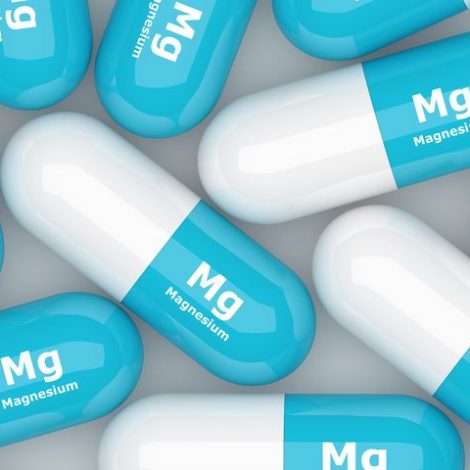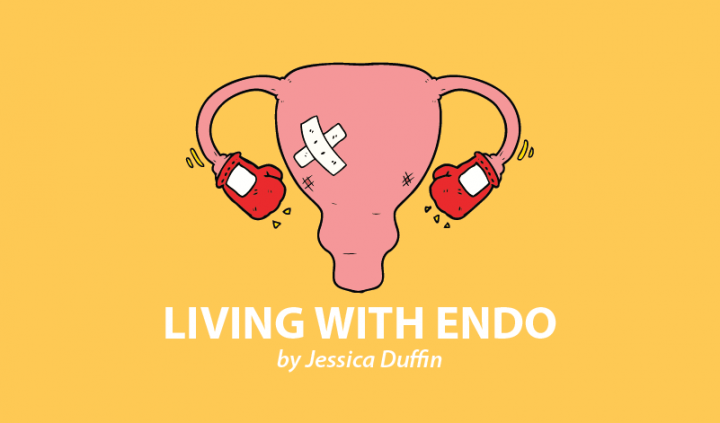How many of us are really aware of whether we’re getting the right amount of vitamins and minerals in our diet? And how many of us are aware of any deficiencies we’re currently experiencing or are more prone to?
I only discovered the problems I was encountering in this area after much trial and error, and from consulting with my naturopathic nutritionist friend. Not only did I discover I lacked in magnesium, but also that most of us are — and people with endometriosis are even more prone to being deficient in this important mineral. This is because not only can we lose a significant percentage of our magnesium supply during menstruation (up to half), but the stress we experience due to living with the condition also depletes our magnesium levels.
But what is magnesium useful for? And how can we increase our levels to help us treat endometriosis naturally? Following are my favorite ways I incorporate magnesium into my holistic treatment of endometriosis and how it can benefit our bodies.
1. Supplements and diet
For those of us with endometriosis, it’s important to be aware that magnesium can help us battle fatigue and balance our hormones.
Magnesium is a muscle relaxant and therefore helps us to unwind and get a better night’s sleep, especially if taken in the evening. This can help those of us already struggling with fatigue to get better quality rest, and potentially counteract the effects of hormone and blood sugar imbalances that can keep us awake at night or cause disturbed sleep.
Magnesium is also essential in energy production, so magnesium deficiency can often lead to feelings of fatigue and weakness. (A personal question of mine is whether the fatigue that comes with endometriosis links to magnesium deficiency that many patients unknowingly experience.)
As I’ve discussed before, it is believed that those of us with endometriosis are more likely to have a hormone imbalance called estrogen dominance, and as endometriosis is an estrogen dominant disease, it’s useful for us to try to balance our hormones. The endocrine system, which regulates and controls our hormones, requires magnesium, among other nutrients, to function properly. Our bodies also use magnesium for regulating blood sugar, which when unbalanced, can cause additional hormone disruptions.
Finally, there is also evidence that magnesium deficiency can contribute to feelings of depression and low mood, which many of us with endometriosis experience at some stage of our journey (or throughout).
Taking magnesium supplements or adding more magnesium-rich foods into our diets can help with all of the above, and support us to feel more energized with endometriosis. Magnesium supplements are readily available and are usually quite affordable. You can also add magnesium into your diet by eating more cacao, brown rice, oats, nuts, legumes, avocado, green leafy vegetables, and figs, to name a few.
2. Magnesium spray
Ah, magnesium spray, my absolute go-to endometriosis pain-relief tool. As mentioned previously, magnesium is a muscle relaxant and can help reduce cramp in our bodies. While I don’t know the ins and outs of how quickly it is absorbed and put to use, whenever I use magnesium spray (which is every time I feel endometriosis pain), my pain levels reduce within minutes.
Magnesium spray is also a great way to get more magnesium into your system if supplements aren’t quite the route for you.
3. Magnesium balm salts
Most of us have heard of Epsom salts, but did you know that Epsom salts are really just magnesium sulfate? Many runners and sports professionals use magnesium baths to help reduce muscle tension and cramping after a physical session, and you probably know how good a bath filled with Epsom salts feels when you have endometriosis cramping. That’s because, just like with magnesium spray, our skin is absorbing the mineral, and it’s reaching the areas where we need it most more quickly than if we took a supplement.
I always try to have a bath filled with Epsom salts on Day 1 of my period. If you get endometriosis pain on a daily basis, having regular baths, or foot soaks if you don’t have a tub, could help you soothe the cramping and muscle tension.
4. Magnesium balm
I am seeing period balms cropping up more and more these days. You can now get magnesium-based balms for muscle cramping to rub into sore spots on the go. In the U.K., you can even buy magnesium balm with pain-relieving CBD!
What about you? Do you use magnesium to help relieve endometriosis? Did you notice a difference when you began adding it to your endometriosis toolkit? I’d love to hear about your experience!
***
Note: Endometriosis News is strictly a news and information website about the disease. It does not provide medical advice, diagnosis, or treatment. This content is not intended to be a substitute for professional medical advice, diagnosis, or treatment. Always seek the advice of your physician or other qualified health provider with any questions you may have regarding a medical condition. Never disregard professional medical advice or delay in seeking it because of something you have read on this website. The opinions expressed in this column are not those of Endometriosis News or its parent company, BioNews Services, and are intended to spark discussion about issues pertaining to endometriosis.


